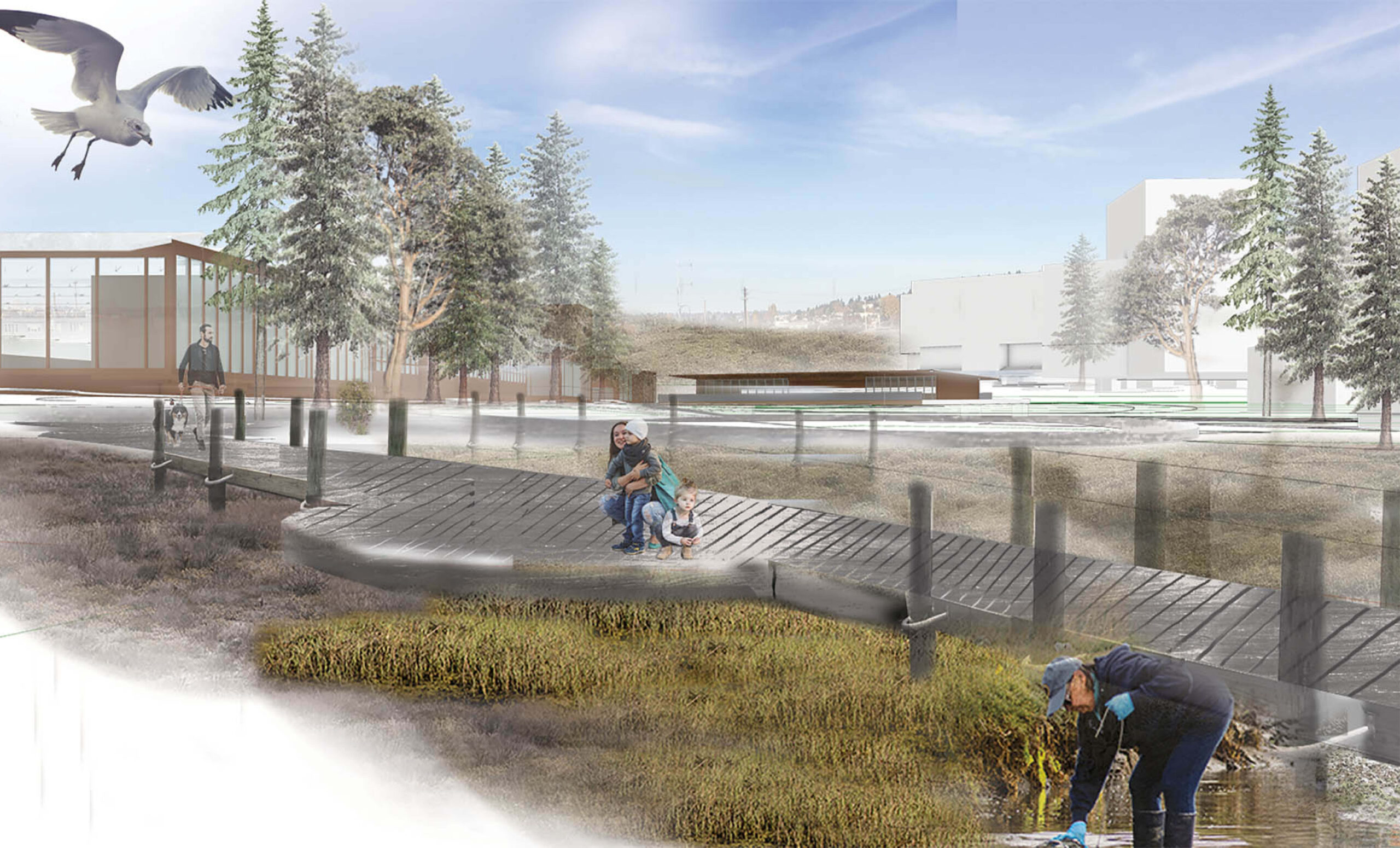Student Work
Course Description
During the Autumn 2019 quarter, an interdisciplinary group of Built Environments students participated in a studio boldly envisioning transit oriented development and the future use of Seattle’s industrial lands. Co-taught by Associate Professor Rick Mohler (Architecture) and Affiliate Instructor David Blum (Urban Design and Planning), the studio considered the creation of a new neighborhood in the Interbay area, northwest of downtown and connected via future light rail stations. Students worked in groups to imagine and develop visions for this new neighborhood, with proposals ranging from the restoration of tidal plains to the creation of hybrid land-use mixing residential and industrial building types. This studio challenged students to work together to imagine innovative and feasible concepts for Seattle’s future neighborhoods.
Click here to see a full post about this innovative studio.
The images featured here are the work of two interdisciplinary teams of students:
Images 1-5 Project: Eco Bay
Students: Eddie Kim, Sarah Lukins, Siiri Mikola, Miggi Wu
Eco Bay project description from students:
“This project defines maximum public benefit as an integrated mix of flexible industrial space, a vibrant pedestrian realm, a range of housing types and a robust response to sea level rise that provides unique outdoor spaces within Seattle.”
Images 6-10 Project: Convergence
Students: Tristan Hogenstijn, Alicia Kellogg, Tera Ponce, Daniel Vu
Convergence project description from students:
“Part of a multidisciplinary BE studio led by Rick Mohler. Team members: Tristan Hogenstijn (Urban Planning exchange student from the Netherlands), Alicia Kellogg (MLArch), Tera Ponce (BArch), and Daniel Vu (MArch). The team represents 7 languages spoken, a wide variety of skills and expertise, but also uniform vision to create an Interbay neighborhood that has its own identity, self-sufficiency, urban density, industrial job opportunities, and attraction to visitors.”
